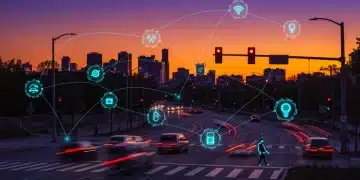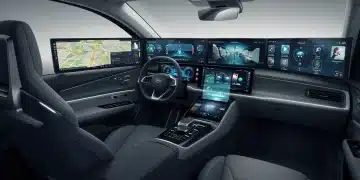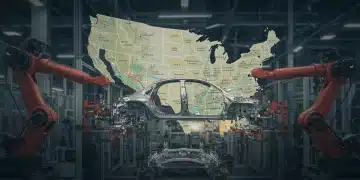5G and Autonomous Driving: US Consumer Expectations by 2025
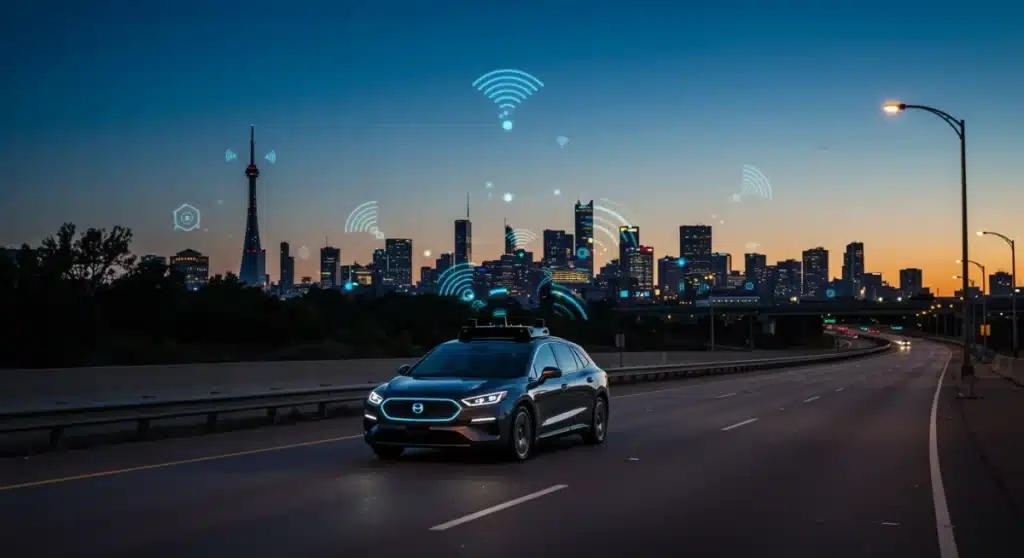
By 2025, 5G technology is poised to significantly accelerate autonomous driving capabilities in the US, promising enhanced safety, efficiency, and new consumer experiences through ultra-low latency and high-speed data transfer.
The convergence of 5G technology with automotive innovation is rapidly reshaping the future of transportation. For US consumers, understanding The Impact of 5G on Autonomous Driving: What US Consumers Can Expect by 2025 is crucial as this transformative era approaches, promising unprecedented connectivity and safety on our roads.
The Foundational Role of 5G in Autonomous Vehicles
5G, the fifth generation of cellular technology, is not just about faster downloads; it’s a critical enabler for the complex demands of autonomous driving. Its ultra-low latency, massive bandwidth, and enhanced reliability are fundamentally changing how vehicles perceive, communicate, and react to their environment.
Without 5G, the full potential of autonomous vehicles remains largely untapped. The speed at which data can be transmitted and processed is paramount for safety-critical functions, allowing vehicles to make instantaneous decisions that mirror or even surpass human reaction times.
Real-Time Data Exchange
Autonomous vehicles generate and consume vast amounts of data, from sensor readings to high-definition mapping information. 5G facilitates the real-time exchange of this data between vehicles (V2V), with infrastructure (V2I), and with pedestrians (V2P), creating a cohesive and responsive transportation ecosystem.
- Vehicle-to-Vehicle (V2V) Communication: Enables cars to share information about speed, direction, and braking, anticipating potential collisions.
- Vehicle-to-Infrastructure (V2I) Communication: Allows vehicles to receive updates on traffic signals, road conditions, and construction zones from smart city infrastructure.
- Vehicle-to-Network (V2N) Communication: Connects vehicles to cloud-based services for navigation, software updates, and remote assistance.
- High-Definition Mapping Updates: Constant, real-time updates to digital maps are essential for precise navigation and understanding complex environments.
Current State of Autonomous Driving in the US
As of late 2024, autonomous driving in the US is primarily at SAE Level 2 and Level 3, meaning advanced driver-assistance systems (ADAS) that require human supervision or intervention in certain conditions. Companies like Waymo, Cruise, and Tesla are leading the charge, but widespread adoption of fully autonomous vehicles (Level 4 and 5) is still a few years away.
Regulatory frameworks are also evolving, with different states taking varied approaches to testing and deployment. This patchwork of regulations adds complexity to the nationwide rollout of autonomous features, even with advancing technology.
Key Players and Milestones
Several companies are making significant strides in the US. Waymo and Cruise operate limited robotaxi services in select cities, demonstrating the viability of Level 4 autonomy in controlled urban environments. Tesla’s Full Self-Driving (FSD) beta program continues to gather data and expand its capabilities, albeit still under Level 2 supervision.
Recent tests have shown improvements in object detection and predictive capabilities, particularly in varied weather conditions. However, the transition from supervised autonomy to truly driverless operation hinges heavily on the robust, low-latency communication that 5G promises.
What US Consumers Can Expect by 2025
By 2025, US consumers are likely to see a significant expansion in the availability and sophistication of Level 2 and Level 3 autonomous features, heavily augmented by 5G connectivity. While fully driverless Level 4 and 5 vehicles might still be niche in terms of widespread personal ownership, their operational domains will expand.
The integration of 5G will primarily enhance the safety and performance of existing ADAS, making features like adaptive cruise control, lane-keeping assist, and automatic emergency braking more reliable and responsive. This will translate into a smoother, safer driving experience for many.
Enhanced Safety and Efficiency
The ultra-low latency of 5G will enable vehicles to react to hazards in milliseconds, potentially reducing accident rates significantly. This real-time responsiveness is a game-changer for safety features.
- Collision Avoidance: Faster data transfer means quicker detection and reaction to sudden obstacles or changes in traffic.
- Traffic Flow Optimization: Connected vehicles can coordinate movements, leading to reduced congestion and fuel consumption.
- Predictive Maintenance: 5G allows for constant monitoring and transmission of vehicle diagnostics, enabling proactive maintenance and preventing breakdowns.
- Emergency Services Integration: Autonomous vehicles can automatically alert emergency services in the event of an accident, providing precise location and impact data.
Challenges and Roadblocks to Widespread Adoption
Despite the technological advancements, several significant challenges remain before autonomous driving becomes ubiquitous. These include infrastructure development, regulatory harmonization, cybersecurity concerns, and public acceptance.
The nationwide deployment of 5G infrastructure, particularly in rural and less densely populated areas, is still ongoing. Autonomous vehicles require consistent and reliable 5G coverage to operate safely and effectively, a condition not yet fully met across the entire US.
Infrastructure and Regulatory Hurdles
Building out the necessary 5G infrastructure for vehicle-to-everything (V2X) communication is a massive undertaking, requiring substantial investment. Moreover, a unified federal regulatory framework for autonomous vehicles is still pending, leading to a fragmented legal landscape.
Different states have varying laws regarding testing and deployment, complicating the development process for manufacturers aiming for national market penetration. 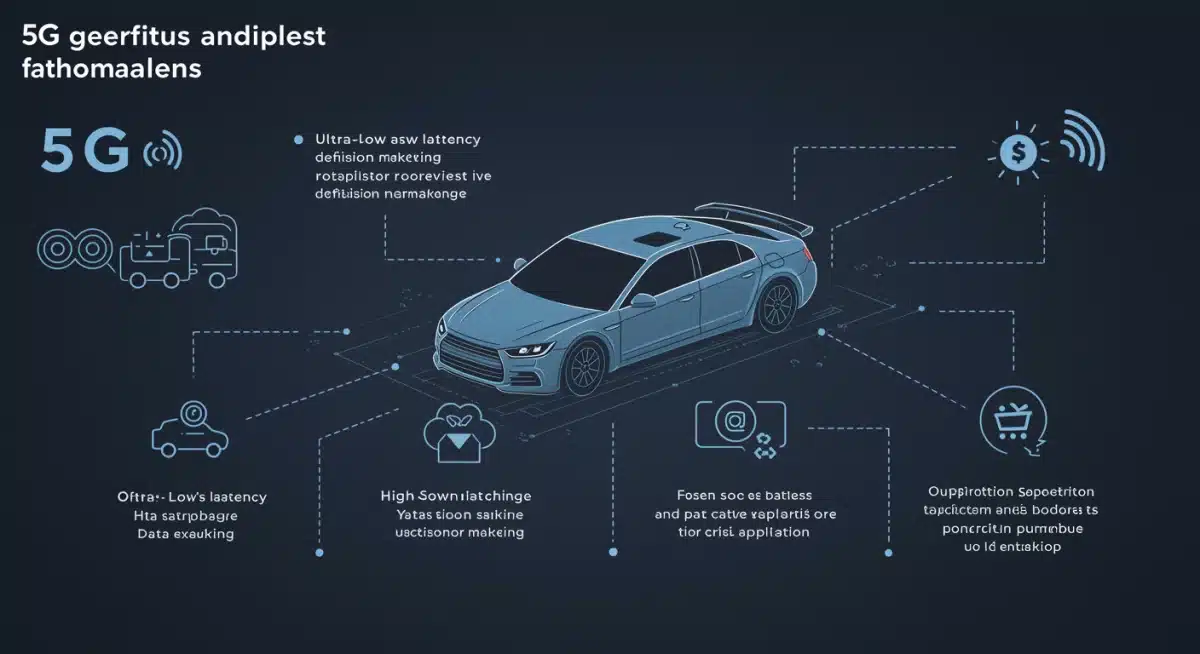 Public perception and trust also play a crucial role; overcoming anxieties about safety and liability is essential for widespread consumer acceptance.
Public perception and trust also play a crucial role; overcoming anxieties about safety and liability is essential for widespread consumer acceptance.
The Economic and Social Impact
The widespread adoption of autonomous driving, powered by 5G, is projected to have profound economic and social impacts. This includes significant changes in the automotive industry, urban planning, logistics, and employment, alongside potential benefits for accessibility and environmental sustainability.
Economically, new industries will emerge around data services, cybersecurity for connected vehicles, and specialized maintenance. The logistics sector stands to gain immensely from autonomous trucks, potentially reducing operational costs and increasing efficiency.
Transforming Industries and Lifestyles
The shift to autonomous vehicles could reshape urban landscapes, reducing the need for extensive parking facilities and potentially freeing up urban space for other uses. For individuals, particularly those with disabilities or the elderly, autonomous vehicles promise increased mobility and independence.
- Job Market Shifts: While some driving jobs may be displaced, new roles in technology development, maintenance, and fleet management will emerge.
- Reduced Traffic Congestion: Optimized traffic flow through V2X communication can significantly cut down on commute times and fuel waste.
- Increased Road Safety: Eliminating human error, a leading cause of accidents, could save thousands of lives annually.
- Accessibility for All: Enhanced mobility options for individuals unable to drive due to age, disability, or other factors.
Future Outlook Beyond 2025
Beyond 2025, the trajectory for 5G and autonomous driving points towards increasingly sophisticated and integrated systems. We can anticipate further advancements in AI and machine learning, leading to more robust decision-making capabilities for vehicles, even in unforeseen circumstances.
The evolution of 5G into 6G and beyond will only amplify these capabilities, pushing the boundaries of what autonomous vehicles can achieve. This will likely include more seamless integration with smart city ecosystems, personalized mobility services, and potentially even flying autonomous vehicles.
The Road to Full Autonomy
The journey to full Level 5 autonomy, where vehicles can operate completely driverless in all conditions, is a long-term goal. However, the foundation laid by 5G will be critical in achieving this. Continued research into sensor fusion, artificial intelligence, and human-machine interaction will be paramount.
The regulatory and ethical considerations will also mature, providing clearer guidelines for deployment and liability. Ultimately, the future envisions a world where transportation is not just a means to an end, but a highly efficient, safe, and integrated part of daily life.
| Key Point | Brief Description |
|---|---|
| 5G’s Core Role | Ultra-low latency and high bandwidth of 5G are essential for real-time data exchange in autonomous vehicles. |
| 2025 Expectations | Expanded Level 2/3 autonomous features, enhanced by 5G for improved safety and efficiency in the US. |
| Challenges Ahead | Infrastructure build-out, regulatory harmonization, and public trust remain significant hurdles for widespread adoption. |
| Economic Impact | Anticipated shifts in automotive, logistics, and urban planning, creating new industries and job roles. |
Frequently Asked Questions About 5G and Autonomous Driving
5G offers ultra-low latency, crucial for instantaneous decision-making in self-driving cars. Its high bandwidth allows for rapid data exchange between vehicles, infrastructure, and cloud systems, enhancing safety and operational efficiency by enabling real-time communication and perception.
By 2025, widespread personal ownership of fully autonomous (Level 4/5) vehicles is unlikely. However, consumers can expect a significant increase in advanced Level 2 and Level 3 features, heavily augmented by 5G, improving existing driver-assistance systems and expanding limited robotaxi services.
Key challenges include ensuring pervasive 5G network coverage, especially in diverse geographical areas, harmonizing fragmented state-level regulations into a unified federal framework, addressing complex cybersecurity threats, and building public trust and acceptance for the technology’s widespread adoption.
5G will dramatically enhance vehicle safety by enabling ultra-fast reaction times for collision avoidance systems and facilitating real-time communication between vehicles and infrastructure. This reduces human error, allowing cars to anticipate and respond to hazards more effectively than current systems.
Beyond driving, 5G will transform in-car experiences with high-definition streaming and advanced infotainment. It will also enable predictive maintenance through constant diagnostics and facilitate seamless integration into smart city ecosystems, optimizing traffic flow and urban planning.
What Happens Next
The trajectory for autonomous driving, underpinned by 5G, is accelerating. Expect continued investment in 5G infrastructure, particularly in urban corridors, and a push for more unified federal regulations. Consumers should watch for incremental improvements in advanced driver-assistance systems and the expansion of limited autonomous services in major US cities. The next few years will be crucial in solidifying the technological and regulatory frameworks that will define the future of self-driving vehicles, moving us closer to a fully connected and autonomous transportation ecosystem.
